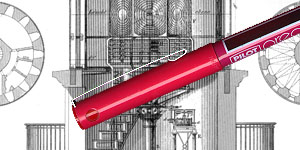


Beyond the Looking Glass
Any electronic display that knows where you're looking can be a window on another world. As you move in front of the display, the scene could change to let you see things as if they were just behind the display. For example, the windows of your future house needn't display the same scene day after day. On Monday you might want to look out on the Himalayas; on Tuesday you might prefer the beach at Waikiki; and on Wednesday you might like to see your neighbors as they appeared on Monday---or as they appear right now---or a year ago last Friday. Perhaps it is night and you want to switch to an infrared view of your neighborhood to check for prowlers. Or maybe you want to zoom in on some detail outside that you can't quite make out.Such smart windows needn't be static two-dimensional views like paintings; they can be windscreens looking onto another place or time. A glass cube in your home could be an electronic aquarium, full only of electronic fish; and when you grow tired of that, it could become a television set. And what works for wall windows can also work for portable windows. Hold up such a window and you hold a view onto another world---any world. Once the computer knows precisely where you're looking, it can change the display as your gaze shifts.
Alternatively, the screen may pay no attention to your gaze but display something new whenever you move it. You might sit in a swivel chair holding such a display in front of you and, as you spin in the chair, get a three-hundred-and-sixty-degree view of another world. Maybe today you want to see the Grand Canyon from the inside, view an abstraction of all the electronic information in your office, or look through the windscreen of a fighter plane banking over the Andes. You might choose a view of the normal world with electronic overlays that explain things---perhaps a broken car engine you need to fix, a patient's body you're about to operate on, or a book you're looking for at the library.
Shrink the display and you end up with a smart photograph. When first seen, it looks like today's static, single-view photographs; but once you move your head---or move the display---the photograph changes to show you what you would see if you were looking at the scene from that new angle. You have, essentially, a hologram of the scene. Each viewing angle shows you something new.
Or consider mirrors. Mirrors today only show you face front. Moreover, they mirror-reverse you, you must always be looking at them, and you have no way to compare yourself over the years or wearing different clothes. A smart mirror---that is, a camera, a computer, and a display screen---needn't have any of these limitations.
Some expensive cars today already carry primitive forerunners of devices like these. They have a dashboard display screen showing the road system and the path to be followed, updated second by second as the car moves. They also have cameras in their skins and dashboard displays showing views from behind the car---or directly in front of it---freeing the driver from having to use awkward rearview or sideview mirrors.
Mirrors, photographs, books, aquariums, windows, walls---perhaps even entire rooms for the very rich---all might soon become windows onto new, active, three-dimensional worlds.